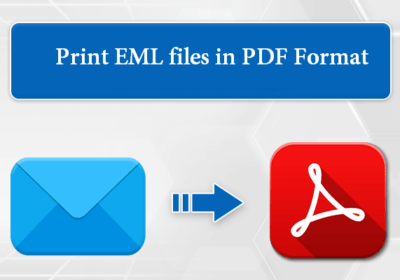
Types of Testing in Software Testing: A Detailed Guide
When it comes to software development, creating a bug-free, user-friendly, and adaptable program is all that matters. Today, there are innumerable software development businesses out there. But, users, as a result, only want the best for their development projects—one who can review their project from start to finish. As a result, different types of testing in software testing have become more critical than before.
Software testing not only makes sure functioning is in line but also aids in defect detection. And that’s before consumers can access the app. Therefore, we will discuss the importance of testing, various types of testing in software testing, and more in this blog. So, let’s begin.
Why are types of testing in software testing important?
Software testing in software engineering is an essential step in the process that guarantees dependability and quality. Let’s examine the importance of software testing in more detail:
- Quality assurance
Testing is an essential part of quality assurance. It determines if the program conforms with the defined quality standards and criteria. Additionally, several software testing techniques ensure that the finished product complies with user expectations and industry requirements.
- Defect detection
Due to complexity, human error, and changing needs, the software is prone to mistakes and flaws. Early in the development process, testing aids in the discovery of these flaws. Additionally, it enables engineers to fix them before they become significant problems.
- Mitigating risks
Undiscovered flaws can result in software failures, security breaches, and financial losses. Testing aids in the assessment and mitigation of software deployment risks. It also aids in the detection of potential vulnerabilities and ensures that vital functions function as planned.
- User satisfaction
Users expect programs that are simple to use, dependable, and efficient. Testing effectively guarantees that the software provides a consistent user experience. Additionally, it contributes to positive user impressions by detecting and resolving issues before they influence users.
- Compliance and regulations
Regulatory regulations and compliance standards apply to many sectors. Testing verifies that the software complies with these rules. As a result, legal implications and potential liabilities are avoided. It also ensures that security measures are in place to safeguard sensitive data.
- Trustworthiness
A faulty software product can tarnish a company’s reputation and erode customer trust. Robust testing helps maintain a positive business image. This is done by ensuring that the software functions as advertised and also meets the user’s needs without unexpected hiccups. You can extract all of these benefits with the right software test company as well.
Going forward, let’s head toward the most important section of this blog, the types of testing in software testing. We will cover each type one by one in detail.
Different types of testing in software testing
Here, in this section, we will go through all four major types of testing in software testing procedures and much more. So stay tuned!
I – Functional testing
Functional testing focuses on validating that the software performs its intended functions correctly. It entails testing individual components or code modules. Moreover, functional testing ensures that there are expected outputs produced based on specified inputs. So within functional testing, three primary subtypes stand out, including
- Unit testing
Testing isolated pieces or modules of code is known as unit testing. Developers often conduct unit tests during the coding phase. This is to ensure that each component functions as expected. This type of testing helps identify defects at an early stage. It is one of the most used types of testing in software testing.
- Integration testing
Integration testing verifies the interactions between different modules or components of the software. Its goal is to ensure that integrated components work together seamlessly. Moreover, it ensures that data is passed correctly between them. Integration testing also prevents integration-related defects.
- Regression testing
New additions and modifications might unintentionally bring flaws into the operation of the software as it develops. Retesting the program is a part of regression testing. This is done to ensure that these revisions haven’t adversely affected the previously verified features. Additionally, this kind of testing is frequently made easier by automated technologies that immediately spot possible regressions.
II – Non-functional testing
Aspects outside of functional requirements are evaluated during non-functional testing. Performance, security, and usability are all included in this. In addition to making sure the program works properly, non-functional testing ensures that it complies with broader quality criteria. The following are a few popular non-functional test types:
- Performance testing
This kind of testing determines how effectively software functions in various environments. Network speeds or fluctuating user loads are two examples of this. Evaluation of performance reveals bottlenecks. It also determines whether the program performs as expected. This makes it one of the most useful types of testing in software testing.
- Security testing
Security testing findings demonstrate how vulnerable software is to external attackers. Furthermore, it guarantees that confidential information is properly preserved. Assessments of vulnerabilities and penetration testing are two examples of this type of testing.
- Usability testing
Through usability testing, the program’s usability and user experience are evaluated. Usability, navigability, and general user delight are all factors that testers consider. Furthermore, usability testing ensures that the program matches user expectations and is user-friendly.
III – Black box testing
Black box testing is one of the most effective testing methodologies for software. It focuses on the software’s external behavior rather than its fundamental reasoning or source code. This type of testing is driven by inputs and expected outcomes. Hence, there are several techniques that fall under software testing. A few of them are:
- Equivalence partitioning
This technique divides input data into groups. So the testers treat inputs within the same group as equivalent. Moreover, test cases are then designed to cover representative inputs from each group.
- Boundary value analysis
Boundary value analysis tests values at the boundaries of valid and invalid input ranges. Since defects often occur at these boundaries, this is one of the popular types of testing in software testing that aims to uncover potential issues.
- Decision table testing
Decision tables are used to test different combinations of inputs and conditions. As a result, test cases are derived from the possible combinations of inputs. This also helps in identifying scenarios where the software might behave unexpectedly.
IV – White box testing
White box testing examines the software’s internal logic, code structure, and flow. As a result, testers have access to the source code and design the tests. This is based on an understanding of the internal workings of the software. So among the notable white box testing approaches are as follows:
- Statement coverage
During testing, one of the types of testing in software testing ensures that every line of code is evaluated at least once. Furthermore, test cases are written in such a way that they cover all conceivable execution pathways of the code.
- Branch coverage
Branch coverage is concerned with testing all possible code branches or decisions. Moreover, it ensures that conditional statements’ true and false outcomes are assessed.
- Path coverage
Path coverage seeks to test all conceivable paths or statement combinations within the code. It also extends coverage by investigating the software’s numerous execution paths.
Conclusion
Software testing is vital as it helps identify and rectify defects and issues within software applications before they reach users. It guarantees a high standard of quality and dependability. Today, we have various types of testing in software testing. As each of them has a functionality, a comprehensive plan can make your software unbeatable. Moreover, it can make the work of developers more effective.
By following our guide, you will be able to churn out a process that gets you toward more success. Nevertheless, you can also hire a software testing company by going through the types of testing in software testing in this blog piece you need for your company.

















